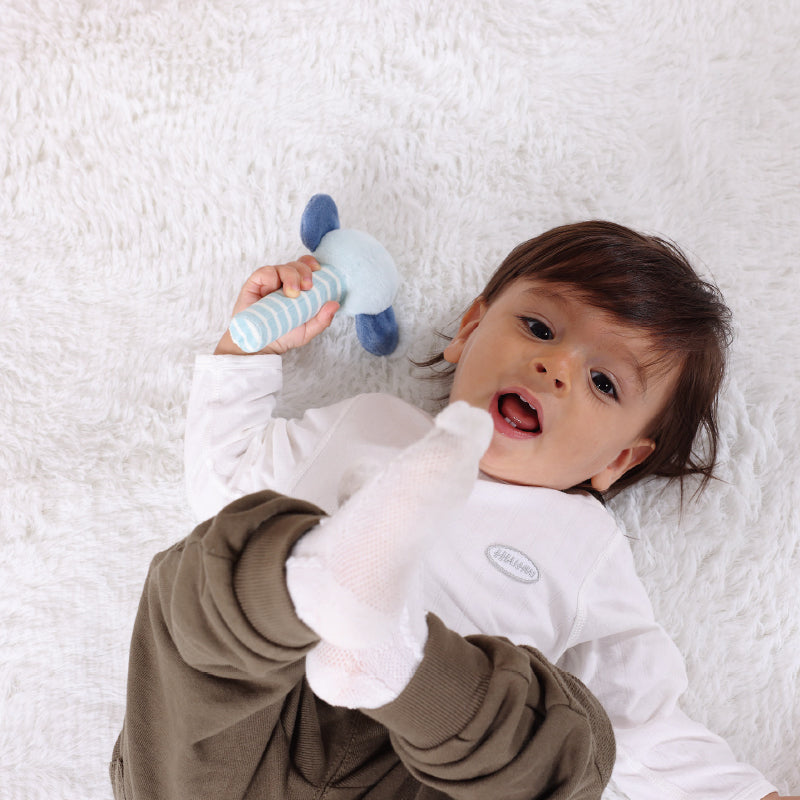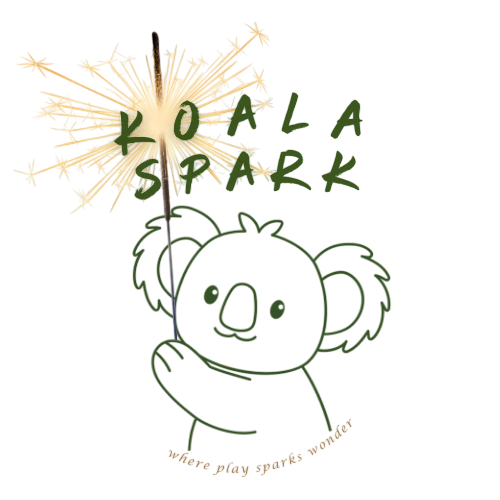
Montessori Learning Begins at Birth
Montessori learning for newborns focuses on creating a supportive and enriching environment to stimulate their natural development. While the Montessori method is often associated with older children, its principles can be adapted to the needs of infants, even from birth. Here’s how Montessori principles can be applied for newborns:
1. Prepared Environment
In Montessori, the environment is carefully designed to support the child’s development. For newborns, this means:
- Simplicity and Safety: Create a safe space with soft, neutral-colored surroundings. Avoid clutter and overstimulation, as newborns are sensitive to their environment.
- Natural Materials: Use natural and safe materials (wooden toys, cotton blankets, etc.) instead of plastic or synthetic items.
- Floor-Based Activities: Allow the baby to spend time on the floor on a comfortable, soft surface (like a play mat). This encourages movement and exploration from an early age.

During a baby's earliest month, they begin to develop their senses and start reacting to sounds, shapes, and movements. Our Crib Bell from Play Kit 0-2 months, helps them practice attention, focus, and physical coordination.
2. Freedom of Movement
One of the key Montessori principles is giving children the freedom to move and explore their surroundings. For a newborn:
- Tummy Time: Encourage tummy time to help strengthen muscles and develop motor skills. This gives them the freedom to push themselves up, reach for objects, and eventually crawl.
- Unrestricted Space: Allow the baby to move freely on their back, and when they begin to roll over, provide space for them to move as they wish.
 The Spinning Drum from the Play Kit designed for 0-2 month-old is a fantastic tool to encourage early gross motor development. The sound it produces when spun further enriches sensory experiences, providing auditory feedback as babies explore cause and effect.
The Spinning Drum from the Play Kit designed for 0-2 month-old is a fantastic tool to encourage early gross motor development. The sound it produces when spun further enriches sensory experiences, providing auditory feedback as babies explore cause and effect.
3. Observation
Montessori emphasizes the importance of observing the child’s needs, interests, and developmental stages:
- Responsive Caregiving: Pay close attention to your baby’s cues, such as when they are tired, hungry, or need stimulation. This observation helps to guide the next steps in providing a nurturing environment.
- Limiting Intervention: Rather than constantly directing or controlling the child’s actions, allow the baby to explore and learn at their own pace. For example, if they reach for an object, let them do so on their own, fostering a sense of independence.

4. Sensory Stimulation
Newborns learn primarily through their senses, and Montessori encourages gentle stimulation:
- Tactile Exploration: Offer the baby objects with different textures—smooth wooden toys, soft fabrics, or natural materials.
- Visual Stimulation: Provide high-contrast black-and-white images or toys, as newborns’ vision is still developing, and they can see these more clearly.
- Auditory Stimulation: Introduce calm, soothing sounds like music, your voice, or gentle rattles. Avoid loud or jarring noises, as they can overwhelm a newborn.
 Each item in Play Kit 0-2 Months is crafted to engage babies in different ways, helping them build the foundational skills they need during the first months of life.
Each item in Play Kit 0-2 Months is crafted to engage babies in different ways, helping them build the foundational skills they need during the first months of life.
5. Routines and Consistency
Montessori also promotes establishing routines to help babies feel secure:
- Predictable Patterns: Try to establish regular times for feeding, sleep, and play. This consistency helps infants feel safe and comfortable.
- Simple, Calm Interactions: When interacting with your baby, keep your voice soft and your movements slow. This encourages the baby to respond with calmness and attentiveness
6. Fostering Independence
Even as newborns, babies can start to develop early independence:
- Self-Soothing: Allow your baby opportunities to settle themselves to sleep or calm down. This can be done through gentle rocking or offering a soft object (like a blanket or a soft toy) they can hold.
- Choosing Objects: Once the baby is a month old, you can present them with a few safe, simple objects, like rattles or small soft toys, and let them explore and choose what interests them.
7. Emotional and Social Development
Montessori emphasizes the importance of building trust and emotional bonds:
- Gentle Touch and Eye Contact: Spend time holding your baby and engaging in eye contact. This creates a deep emotional connection.
- Respectful Interaction: Respect your newborn's cues and needs. When they cry, respond promptly with care and comfort, acknowledging their feelings.
Example Activities for Newborns (Montessori-Inspired):
- Mobile: A simple, high-contrast bed/crib surround can stimulate visual development.
- Tummy Time with Toys: Place a few safe, textured toys within reach during tummy time to encourage reaching and grasping.
- Mirrors: Some babies enjoy looking at their reflection. A baby-safe mirror can be used as part of tummy time to encourage self-recognition.




By following these Montessori principles, even from birth, you create a supportive environment for the baby’s development, encouraging exploration, independence, and sensory growth.
Our Play Kits
Our Montessori Play Kits are a wonderful way to lay the foundation for a child’s love of learning and creative exploration. By providing high-quality, open-ended toys and thoughtful guidance, our play kits helps parents support their children’s development in a way that aligns with Montessori principles fostering independent thinking, creativity, and a strong sense of self.




Explore our collection of Play Kits now :
Each instructional manual that accompanies the play kits guide parents on introducing each item to their child, offer age-appropriate tips, and suggest ways to incorporate the toys into everyday routines. This not only empowers parents but also ensures that they are creating a nurturing, developmentally appropriate environment for their child’s growth.
